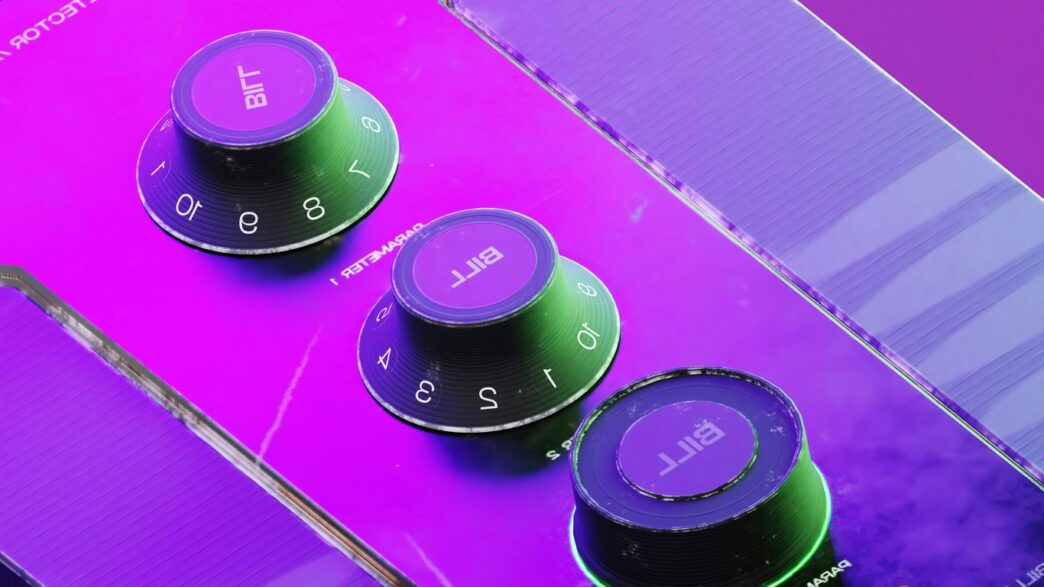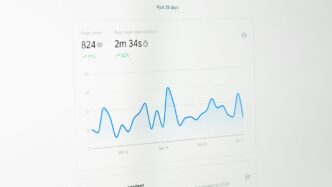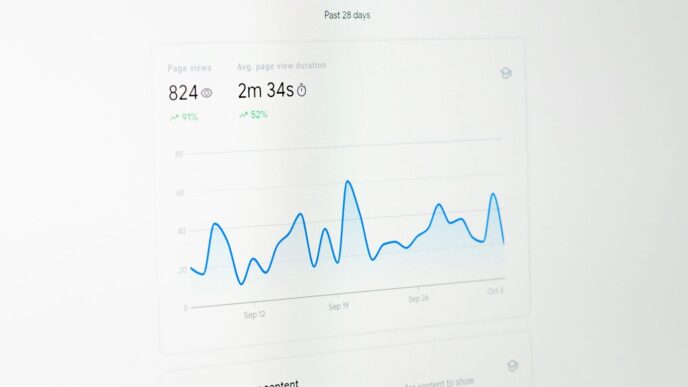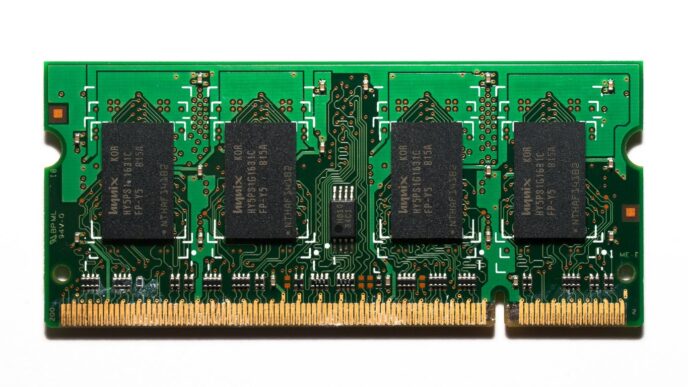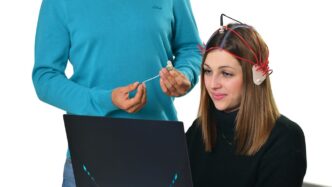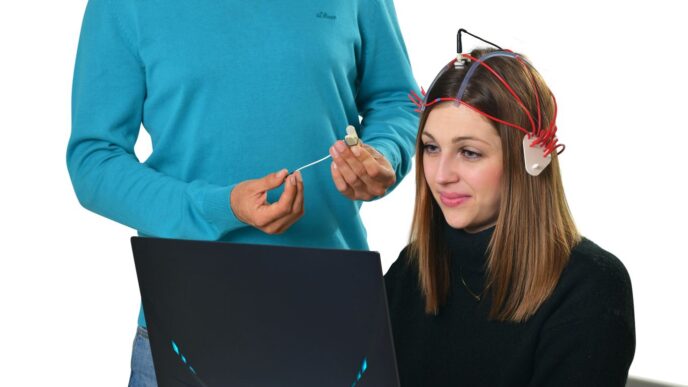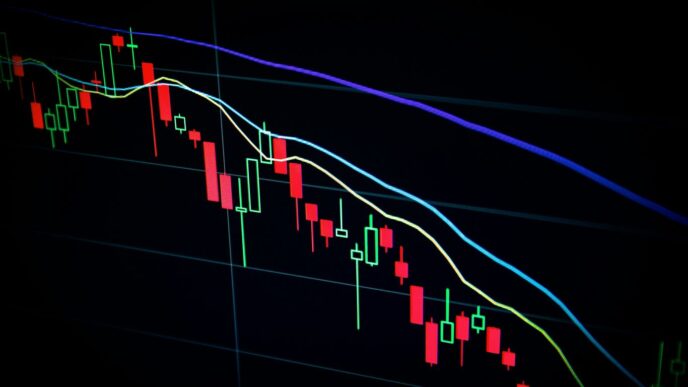It feels like technology is moving at warp speed lately, doesn’t it? Every time you turn around, there’s something new. Thinking about where we’ll be in, say, 2030, is kind of mind-boggling. We’re talking about AI doing more than just what we tell it to, cars driving themselves, and maybe even VR feeling like you’re actually there. It’s a lot to take in, but it’s happening. Let’s look at some of the big 2030 predictions and see what might be around the corner.
Key Takeaways
- Artificial intelligence will move beyond simple tasks to anticipate needs and aid in complex decision-making across many fields.
- Connectivity will expand significantly, with 6G and advanced IoT networks making smart cities and homes more common.
- Sustainable technologies, like better renewable energy and carbon removal methods, will become central to tackling environmental issues.
- The lines between digital and physical realities will blur thanks to VR and AR, changing how we learn and work.
- Robotics and autonomous systems will become more integrated into industries and daily life, requiring public trust and transparency.
Artificial Intelligence: Reshaping Industries and Daily Life
Alright, let’s talk about AI. It’s already changed a lot of how we do things, but by 2030, it’s going to be way more than just automating tasks. Think of AI not just doing what you tell it, but actually figuring out what you’ll need next and making smart choices on its own. It’s like having a super-powered assistant that’s always one step ahead.
AI Beyond Automation: Anticipating Needs and Strategic Decisions
We’re moving past AI just handling repetitive jobs. By 2030, expect AI systems to get really good at predicting outcomes and suggesting the best path forward. This means businesses will use AI to make big strategic calls, not just manage daily operations. It’s about AI helping to steer the ship, not just swab the decks. This shift will likely mean some jobs change quite a bit, and new ones will pop up that we can’t even imagine yet. It’s a big change, and honestly, it’s happening faster than many people think.
Predictive Medicine and Personalized Treatments
Healthcare is a huge area where AI is set to make a massive difference. Imagine AI looking at your health records and spotting potential problems before you even feel sick. That’s predictive medicine. It means catching things early, which usually leads to much better results. Plus, AI will help create treatments that are made just for you, based on your unique genetic makeup. So, instead of a one-size-fits-all approach, medicine will become super personalized. It’s a move from treating sickness to actively preventing it.
Real-Time Cybersecurity and Adaptive PII Detection
As our world gets more connected, the threats online get smarter too. AI is going to be our main defense. Think of AI systems constantly watching over networks, spotting suspicious activity the second it happens, and stopping attacks before they can even start. It’s not just about finding hackers; it’s about AI learning and adapting to new threats on the fly. This constant, adaptive defense will be key to keeping our personal information safe in an increasingly digital world. This also means AI will get much better at spotting and protecting Personally Identifiable Information (PII) automatically, which is a big deal for privacy.
The Evolving Landscape of Connectivity and the Internet
It’s pretty wild to think about how much the internet has changed, right? From those screechy dial-up days to what we have now, it’s been a massive shift. Looking ahead to 2030, things are set to get even more interesting. We’re talking about a world where everything is connected in ways we’re only just starting to imagine.
The Internet of Things: Smarter Cities and Home Automation
The Internet of Things, or IoT, is going to be everywhere. Imagine cities where traffic lights talk to cars, or where your home knows when you’re coming and adjusts the temperature. It’s not just about convenience, though. IoT devices will collect tons of data, helping us manage things like energy use much better. Think about your fridge telling you you’re out of milk, or your thermostat learning your schedule to save power. It’s all about making our lives smoother and more efficient.
Beyond 5G: The Dawn of 6G and Enhanced Connectivity
We’re already getting used to 5G, but the next step is 6G. This isn’t just a little faster; it’s a huge leap. We’re talking speeds that could make current downloads look like they’re happening in slow motion. This kind of super-fast, low-latency connection is what will really make things like advanced virtual reality and truly responsive smart devices possible. It’s going to open up a whole new world of what we can do online and with our gadgets.
Decentralized Architectures and AI-Driven Networks
Networks are also getting smarter. Instead of everything being controlled from one central place, we’ll see more decentralized systems. This means things can be more resilient and perhaps even more secure. Plus, AI is going to play a big role in managing these networks. AI can help predict problems, optimize traffic flow, and make sure everything runs smoothly without much human input. This combination of decentralization and AI will make our internet infrastructure more robust and adaptable than ever before.
Sustainable Innovations for a Greener Future
It’s pretty clear that we need to do better for the planet, right? Luckily, technology is stepping up. By 2030, expect to see some big shifts in how we power our lives and manage our resources. It’s not just about feeling good; it’s about making real changes.
Renewable Energy as a Cornerstone Technology
Renewable energy sources like solar and wind are going to be way more than just alternatives by 2030. They’re becoming the main event. We’re talking about better solar panels that capture more sun, even on cloudy days, and wind turbines that are more efficient and less intrusive. Battery storage is also getting a serious upgrade, meaning we can store all that clean energy for when the sun isn’t shining or the wind isn’t blowing. This makes renewables a much more reliable power source for homes and businesses alike. It’s a huge step towards reducing our reliance on fossil fuels and cleaning up the air we breathe. The push for green technological innovation is definitely on, but we need to be smart about how we implement it to avoid unintended consequences [f723].
Smart Grids and Decentralized Energy Production
Forget the old way of doing things where power plants sent electricity one way. Smart grids are the future. These are like super-intelligent power networks that can manage energy flow much more effectively. They can balance supply and demand in real-time, rerouting power where it’s needed and reducing waste. Plus, with decentralized energy production, more people will be generating their own power through rooftop solar or small wind systems. This makes the whole energy system more resilient – if one part goes down, others can pick up the slack. It’s about giving communities more control over their energy.
Carbon Removal and Sustainable Fuel Solutions
We’ve put a lot of carbon into the atmosphere, and just cutting emissions isn’t enough anymore. By 2030, technologies designed to actively remove CO2 from the air will become more common. Think of it like a giant air filter for the planet. Alongside this, we’ll see a big push for sustainable fuels. Electric vehicles will be everywhere, but we’ll also have better options for things like planes and heavy machinery, using things like hydrogen or advanced biofuels. This is all about creating a circular economy where we’re not just using up resources but actively cleaning up our mess and finding ways to power our world without harming it.
Key changes to expect:
- More efficient solar and wind power generation.
- Advanced battery technology for reliable energy storage.
- Smarter power grids that reduce waste and improve reliability.
- Widespread adoption of carbon capture technologies.
- Development and use of sustainable fuels for transportation and industry.
The Fusion of Digital and Physical Realities

It feels like just yesterday we were talking about smartphones as the next big thing, and now, by 2030, the lines between our digital lives and the actual world are going to be seriously blurred. Think about it: virtual reality (VR) and augmented reality (AR) aren’t just for games anymore. They’re becoming tools that change how we learn, how we work, and even how we hang out.
Immersive Experiences in Education and Work
Remember those old textbooks? Get ready to ditch them. By 2030, classrooms will look a lot different. Imagine history lessons where you can actually walk through ancient Rome, or science classes where you conduct experiments in a virtual lab without any risk. This isn’t just cool; it means people will actually remember what they learn better. For professionals, it’s a game-changer too. Architects can walk through buildings before they’re built, and engineers can test out new designs in a digital space. It’s like having a practice run for everything, making mistakes in the digital world instead of the real one.
- Virtual Field Trips: Students can visit places they’d never normally see.
- Interactive Training: Complex skills can be practiced safely and repeatedly.
- Remote Collaboration: Teams can work together on 3D models as if they were in the same room.
Augmented and Virtual Reality Integration
So, what does this integration actually look like? VR will put you in a completely different world, while AR will overlay digital information onto the world you see around you. This means your everyday environment can become interactive and informative. Think about walking down the street and seeing reviews pop up over restaurants, or getting directions projected right onto the sidewalk. It’s about making information accessible right when and where you need it, without having to pull out a phone. This blend is going to make everything from shopping to getting around town feel totally new.
Real-Time Language Translation for Global Interaction
One of the biggest hurdles to global connection has always been language. But by 2030, AI-powered translation is going to make that a non-issue. Imagine having a conversation with someone from another country, and their words are translated into your language instantly, and vice-versa. This isn’t just about travel; it’s about business deals, international friendships, and understanding different cultures on a deeper level. It’s like having a universal translator in your pocket, making the world feel a lot smaller and more connected.
Quantum Computing: Opportunities and Cybersecurity Challenges
Okay, so quantum computing. It sounds like something straight out of science fiction, right? But by 2030, it’s going to be a lot more real, and it’s going to shake things up, especially when it comes to security and how we handle massive amounts of data.
Predictive Analytics for Climate Science and Disaster Management
Think about predicting earthquakes or massive floods. Quantum computers, with their ability to crunch numbers in ways we can’t even imagine right now, could make these predictions way more accurate. This isn’t just about knowing what’s coming; it’s about potentially saving lives and reducing the damage from natural disasters. We’re talking about early warning systems that give communities more time to prepare, which is a pretty big deal. It could also help us track how well carbon removal efforts are actually working, which is important for the planet.
The Risk of Breaking Encryption and Developing Digital Trust
Here’s the flip side, and it’s a big one. The same power that lets quantum computers do amazing things also means they could break a lot of the encryption we rely on today. Your online banking, your private messages, even government secrets – they could all be at risk. This means we absolutely have to get ahead of the curve and develop new ways to keep our digital information safe. It’s like a race between breaking codes and building stronger ones. We’ll need new technologies to build what we call ‘digital trust,’ making sure our financial transactions and personal data are secure even against these super-powerful computers.
Secure Communications and Advanced Data Processing
On the plus side, quantum computing also opens doors for super-secure communication. Imagine unhackable internet connections. That’s the promise. Beyond just security, these machines can process data in ways that will speed up discoveries in fields like medicine and materials science. We’re talking about designing new drugs by simulating molecules at an atomic level or creating new materials with specific properties. It’s a whole new level of computational power that could solve problems we haven’t even figured out how to tackle yet.
The Rise of Robotics and Autonomous Systems

It feels like just yesterday robots were confined to factory floors, doing the same repetitive task over and over. But by 2030, that picture is going to look a whole lot different. We’re talking about robots moving beyond simple automation and into more complex, dynamic environments. Think about it: the global unmanned systems market is expected to hit a massive $48 billion by 2030, showing just how much this field is growing.
Robots in Industries and Domestic Assistance
In factories and warehouses, robots will become even more sophisticated, handling a wider range of tasks with greater dexterity. But the real shift will be in our homes and public spaces. We’re on the cusp of seeing humanoid robots become a common sight. These aren’t just clunky machines; they’re being designed with advanced AI that allows them to learn, adapt, and interact more naturally. Imagine a robot that can help with household chores, assist elderly family members with daily tasks, or even provide companionship. This could free up so much of our time and offer real support to those who need it.
- Household Chores: Robots taking over cleaning, cooking prep, and tidying.
- Elderly Care: Providing assistance with mobility, medication reminders, and social interaction.
- Logistics: Handling deliveries and inventory management in retail and commercial settings.
Autonomous Vehicles and Connected Transportation
Autonomous vehicles are no longer just a futuristic concept; they’re becoming a reality. By 2030, expect to see more self-driving cars, trucks, and delivery bots on our roads. This shift promises to make transportation safer and more efficient. Connected transportation systems will allow vehicles to communicate with each other and with infrastructure, optimizing traffic flow and reducing accidents. It’s a big change, and it’s happening faster than many people realize.
Public Trust and Transparency in AI-Powered Transport
Of course, with all this new technology comes questions. How do we ensure these autonomous systems are safe? How do we build trust with the public? Transparency will be key. We need clear explanations of how these systems work and robust safety protocols. Regulations will need to catch up, and there will be ongoing discussions about ethical considerations. Building public confidence will be just as important as the technological advancements themselves. It’s a complex puzzle, but one we need to solve to fully embrace the benefits of this robotic revolution.
Transforming Healthcare Through Technology
It feels like just yesterday we were talking about basic health apps, and now, by 2030, healthcare is set to look completely different. We’re talking about a future where getting medical help is way easier and more personal. It’s not just about new gadgets; it’s about how technology can actually help more people get the care they need, especially those who have had trouble accessing it before. This is a big deal, considering how many people worldwide still lack basic healthcare access, and the projected shortage of healthcare workers. AI offers innovative solutions to bridge these gaps.
Mainstreaming Telemedicine and Remote Health Services
Forget waiting rooms. By 2030, telemedicine and remote health services will be the norm. Think about it: high-speed internet and smart apps mean you can have real-time chats with your doctor, get your vitals monitored from home, and receive ongoing support without leaving your couch. This is a game-changer, particularly for folks living in rural areas or places that don’t have many doctors. It means better health for more people and a constant connection with your healthcare team.
AI in Diagnostics and Personalized Treatment Plans
Artificial intelligence is going to seriously shake things up in how we figure out what’s wrong and how we treat it. By 2030, AI programs will be able to look at your medical information super fast and spot things that might be missed otherwise. This could mean catching diseases earlier than ever before.
Here’s a peek at what AI could do:
- Early Disease Detection: Analyzing scans and patient data to find subtle signs of illness.
- Tailored Treatments: Suggesting the best medications and therapies based on your unique genetic makeup and health history.
- Predictive Health: Identifying individuals at high risk for certain conditions before symptoms even appear.
This AI assistance will help create treatment plans that are just for you, cutting down on side effects and making sure the medicine works best. It’s like having a super-smart assistant helping doctors make better choices every day.
Ethical Considerations in AI Healthcare
Of course, with all this amazing tech comes some serious thinking we need to do. We have to be careful about keeping patient information private and make sure the AI isn’t biased. It’s a balancing act between using these new tools to help everyone and doing it the right way. We need clear rules and guidelines to make sure AI in healthcare is fair and safe for all. It’s about building trust as we move forward into this new era of medicine.
Looking Ahead: What’s Next?
So, as we wrap up our look at what 2030 might hold, it’s pretty clear things are going to be different. We’ve talked about AI getting smarter, cars driving themselves, and even how we might get our energy. It’s a lot to take in, and honestly, some of it sounds like science fiction. But the tech world moves fast, and what seems wild today could be normal in just a few years. It’s not just about the gadgets, though. These changes will affect how we work, how we stay healthy, and how we connect with each other. It’s going to be interesting, maybe a little messy, but definitely a ride worth paying attention to.
Frequently Asked Questions
How will Artificial Intelligence change things by 2030?
By 2030, AI will do much more than just automate tasks. It’s expected to help us make smarter choices, predict health problems before they happen, and keep our digital information safer in real-time. Think of AI as a helpful assistant that can guess what you need and make good decisions, not just follow orders.
What’s new with the Internet and how we connect?
Get ready for a world where almost everything is connected! The ‘Internet of Things’ will make our cities and homes much smarter, managing things like energy and security automatically. Plus, we’ll be moving beyond 5G to even faster connections with 6G, making everything work smoother and quicker.
How will technology help the environment by 2030?
Technology will be a big player in keeping our planet healthy. We’ll see more clean energy sources like solar and wind power working with smart power grids to share electricity efficiently. We’ll also use tech to capture carbon from the air and develop cleaner fuels, making a big difference in fighting climate change.
Will virtual reality and real-world experiences blend together?
Yes! By 2030, the lines between the digital world and the real world will get blurry. Imagine learning in super-realistic virtual classrooms or working on projects in a mixed reality space. Also, AI will help translate languages instantly, making it easier for everyone to talk to each other, no matter what language they speak.
What are the big ideas behind quantum computing?
Quantum computing is a powerful new type of computing. It could help us solve really complex problems, like predicting weather patterns or discovering new medicines. However, it also brings challenges, like potentially breaking current security codes, so we’ll need new ways to keep our information safe.
How will robots and self-driving cars change our lives?
By 2030, robots will be more common, helping out in factories and even in our homes. Self-driving cars will be on the roads, making travel safer and more efficient, especially when connected with smart city systems. Building trust with people will be key for these new technologies to be widely accepted.


